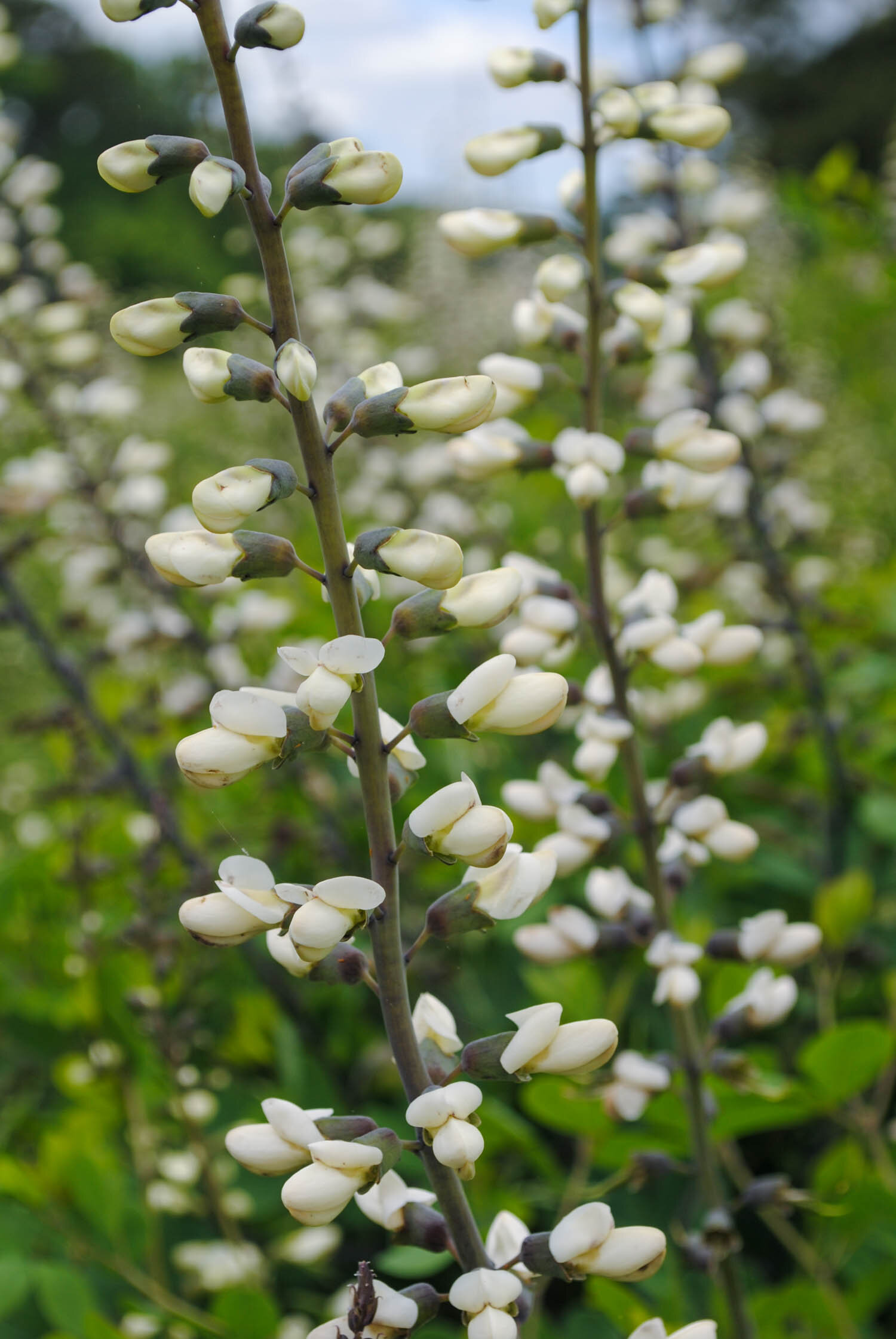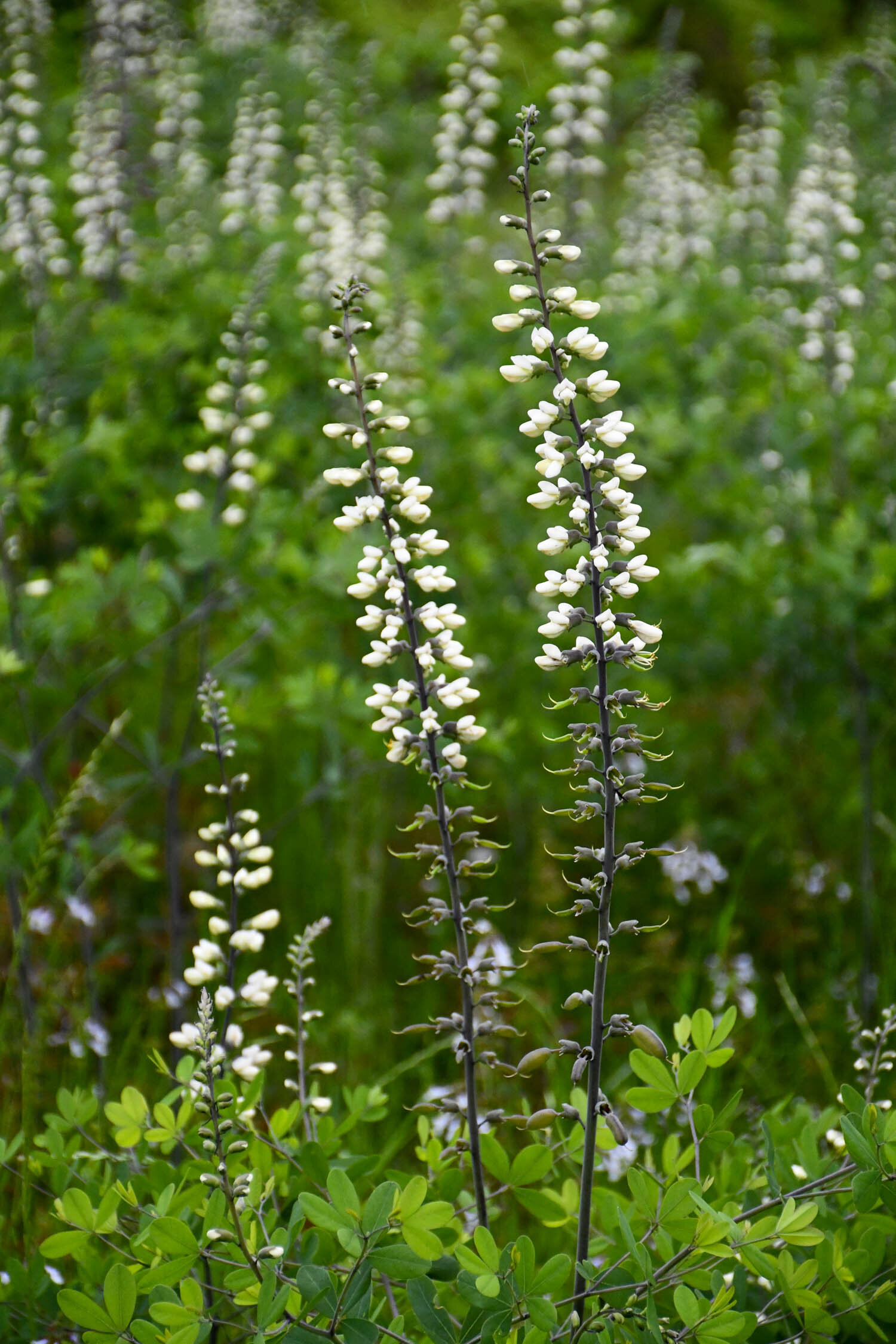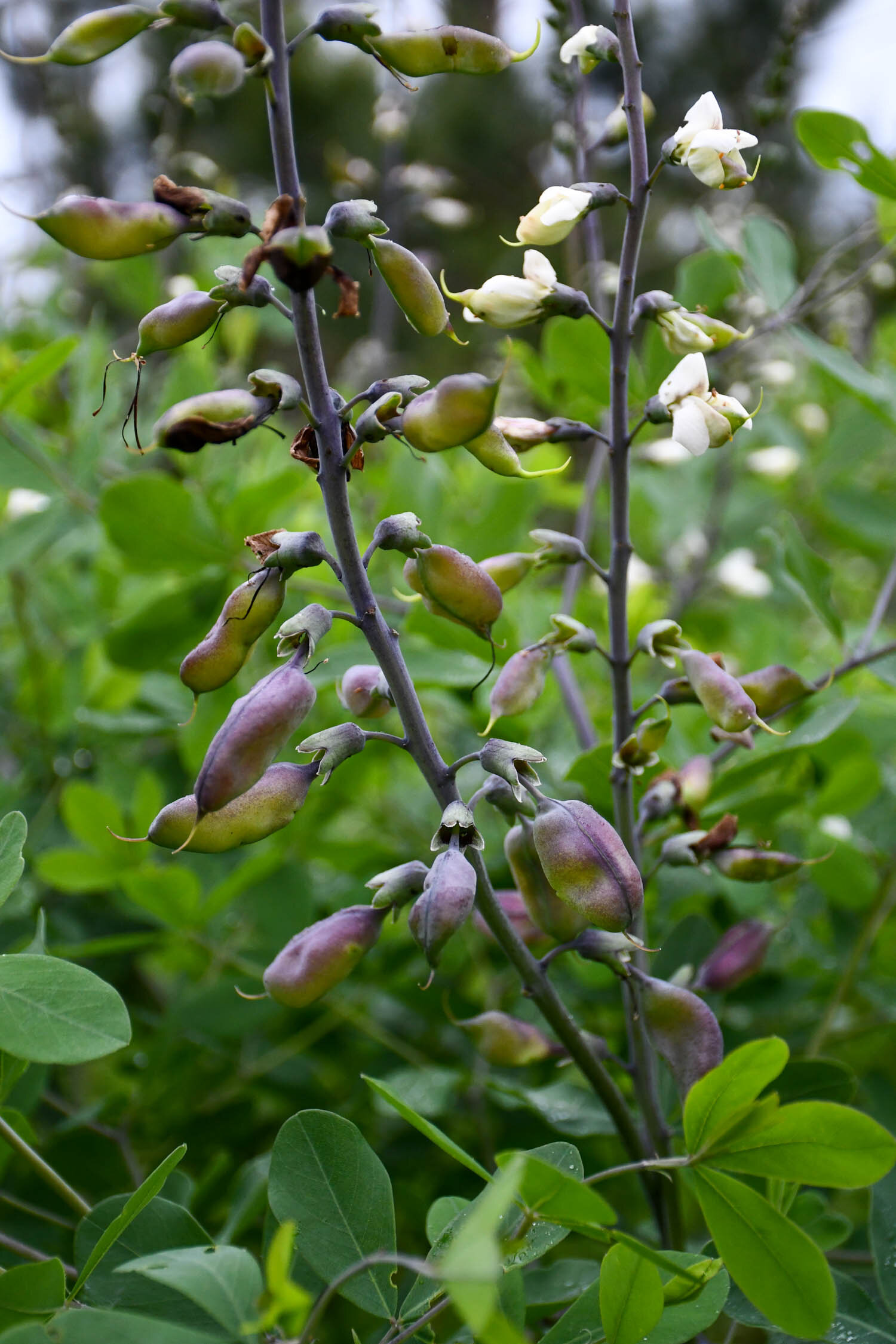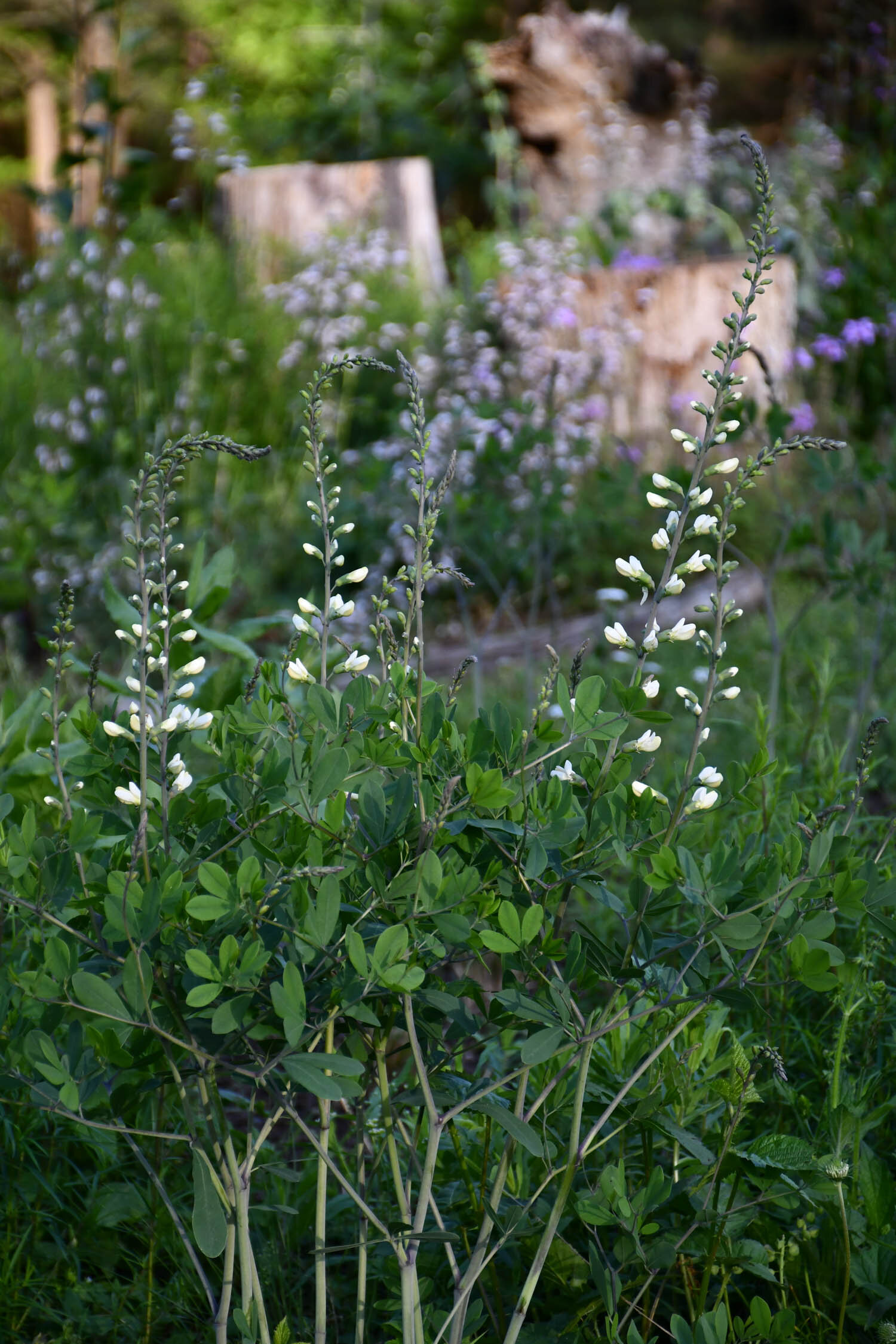If I were forced to choose a favorite herbaceous perennial genus of all time, it would be Baptisia. I'm a fan of all the species, and I do hope one day to have them all growing here at my house. I even love the hybrids, some of which occur naturally where ranges overlap.
But, why Baptisia? I think of the many perennials we have in our gardens, it is one of the few that truly offers four season interest. They erupt out of the ground in early spring with their asparagus-like shoots that soon fill with trifoliate, clean foliage. Then, like a colorful, slow moving comet with long tails the inflorescences rise with dozens or even hundreds of flowers present on them. And, I do adore the classic papilionaceous flowers of Baptisia, their banner, wings, and keel that greet pollinators. Bees push against the keel to help get access to the nectar, and that force lowers this fused petal to expose the stamens and pistils. (You can mimic this act by pulling down on the keel to see the stamens.) In a beautiful example of co-evolution, lower flowers that are mostly female are preferred because they have higher nectar rewards. Bees will then move towards the higher flowers on the same inflorescence, which tend to be more male and have copious pollen. When they move to the next flower, they then carry fresh pollen to increase the chances of crossing with the nectar-rich, female flowers of another plant. Once flowers are pollinated they swell into bloated green pods that contain seed. These eventually turn black, and the seeds dehisce, which creates a rattle that even Native American children used for entertainment. These pods will often remain through the winter, held high on the inflorescences that were full of blooms over half a year ago.
But, there's more to this wonderful native. One of the things I love most about the taller Baptisia australis and Baptisia alba is their height early in the season that allows me to create layers in plantings. Tall herbaceous plants are rare in early spring, but their quick emergence puts them in a unique category. Deer tend to avoid them (note the word *tend to* there). Baptisia overall are very drought tolerant, partly because their tap roots grow deep. Wild indigos are also all nitrogen fixers and thus help to enrich the soil in which they grow. I’ve already discussed the interplay between Baptisia and bees, but I can’t forget that some butterflies even host on them. And, for cut flower enthusiasts, they perform well in a vase. I regularly have cuttings last a week for me.
There's also much story and history with this plant. They are called wild indigos because members of this genus was used as a dye by Native Americans and then colonists. In fact, Baptisia comes from the Greek bapto meaning “to dip” or “to dye.” Allan Armitage in Herbaceous Perennial Plants stated that back in the 1700's, indigo was derived from Indigofera, but diminished supply caused the English government to ask farmers in the southeast US to grow wild indigo. Thus, Baptisia became one of the first crops to be subsidized by a government. Evidently the process was challenging, and that's why this species is grown more for its ornamental and ecological purposes rather than coloring textiles.
Look closely at the flowers and you can see the upper banner, the wings, and the mostly hidden keel on the flowers of Baptisia alba.
Growing up, I didn't have Baptisia around me in Tennessee. I would see it in nurseries, and really Baptisia australis was all I knew. But, several years ago right after moving to Texas, I was delighted to discover Baptisia do grow wild here. While the less showy stem mound Baptisia nuttalliana is the most prevalent, I have been able to find Baptisia alba, Baptisia bracteata, and Baptisia sphaerocarpa in the wild. And, I hope to soon see Baptisia australis in north Texas.
Of the three I’ve encountered, I have most welcomed Baptisia alba into my garden (Don't worry, I'm bulking up the other two!). Years ago, I discovered a massive population of this species about fifteen minutes from our house. Of course, I say massive because I had never seen it in its native habitat. I've seen one or two plants in a garden over the years, but at this site there were at least a several hundred individuals growing from the top of a hillside all the way down toward the floodplain edge. I remember thinking, "What wonderful place is this that Baptisia grows wild and free?" Seeing this stand occurring naturally made me realize that Baptisia could be used en masse for spectacular effect. I will add a nomenclature note. Some authorities call this form Baptisia alba var. macrophylla, but I have yet to read anything about Baptisia alba var. alba. It is possible this name is just a synonym of Baptisia alba.
Here’s one of the first photos that I took of this incredible population of Baptisia alba.
This photo was taken a week earlier when Thomas Rainer visited our students and shows how much these plants can rise and elongate within a week.
In some spots Baptisia alba was highly sociable with some plants so thick they touched each other and formed a hedge.
Here you can see just how close some Baptisia alba stems grew together.
The neutral white flowers of Baptisia alba allow it to combine well with other colors like the light blue Salvia lyrata and coral Castilleja indivisia.
Karen provides scale for some of these large forms of Baptisia alba. It was even over my head!
Like comets with long tails, the racemes rise into the sky and glow a beautiful white.
The swelling seedpods of Baptisia alba. Eventually, these will harden and turn into rattles.
At this site there were a few individuals that exhibited more yellow flowers, shorter habit, and more compact inflorescences. These were likely hybrids with Baptisia nuttalliana.
A close up of the likely Baptisia alba × nuttalliana hybrid.
From this population, I took cuttings and also collected seed later in the fall, scarified it, and sowed it. And, now I have plants galore at my house. They are come into full bloom in April. I love watching their evolution as the shoots rise with a tinge of smoky purple, likely due to some anthocyanin sunscreen to contend with the early spring sunshine. I use them as plant anchors in my beds, their height providing focal points above the other flowers. And, while I've heard it recommended to plant one here and there to mimic "how they occur in nature", from this population I’ve learned not to be afraid to put then closer together.
Either by itself or in a group, Baptisia alba is most welcomed in a garden.
A few weeks ago, we had this enchanting fog rise over the garden after an afternoon rain that created some opportunities for photographing Baptisia alba against a glorious sunset.
The fog thickened, and created this wonderful atmosphere to enjoy the silhouettes of Baptisia alba.
I’ll be honest. I feel like I’ve just dipped into this incredible genus, and I still haven’t learned all its secrets. One day I hope to have a backyard full of Baptisia, not just Baptisia alba, but many species of many colors. In growing them, I can’t wait to learn more about this wonderful group of plants.














